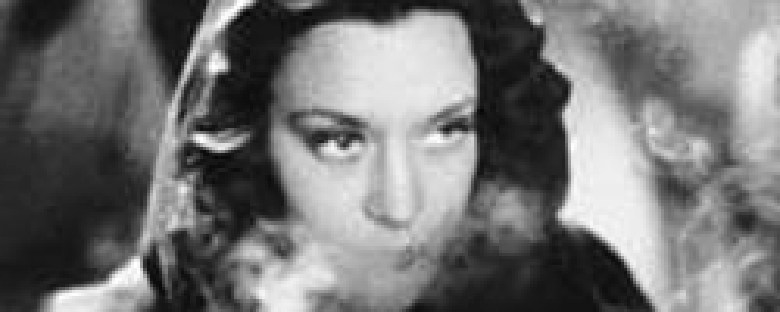Reviews
Robert Bresson
France, 1945
Credits
Review by Matt Bailey
Posted on 10 July 2004
Source The Criterion Collection DVD
Hélène, a beautiful and wealthy Parisian aristocrat, pretends to be bored with her lover, Jean, to test his love for her. To her shock and dismay, he dumps her. Hélène vows to get revenge on Jean for his coldness. Her motives remaining hidden for the time being, Hélène approaches a pair of acquaintances, mother and daughter, who have fallen from her social circle onto hard times. The daughter, Agnès, supports herself and her mother by dancing in a seedy club and by entertaining men for money on the side. Hélène makes a seemingly magnanimous offer to help restore the mother and daughter to their former social status if they agree to cloister themselves in an apartment bordering a large Parisian park, the Bois de Boulogne, that (perhaps unknown to them) has a reputation as a haven for prostitutes. While Agnès doesn’t want to give up dancing, she realizes that Hélène’s offer is the only way out of her current lifestyle. Once the pair is comfortably secreted away from their former lives, Hélène arranges a “chance” meeting between Jean and Agnès in the Bois. Jean immediately falls for Agnès. Hélène and Agnès both make disingenuous attempts to dissuade Jean’s affections, but it only makes Jean more persistent. Eventually, Jean marries Agnès. At the wedding, Hélène calmly approaches Paul and tells him, “You have married a whore.” Jean is devastated and Agnès collapses from the stress on her weak heart. Jean’s love for Agnès is so strong, however, that he vows to love her always.
Les Dames du Bois de Boulogne, Bresson’s third film after a forgettable comedic short, Affaires publiques, and the little-seen convent melodrama, Les Anges du Péché, is often considered to be “Bresson before Bresson,” meaning that although he is the director of the film, it is not in the same vein (nor the same league) as his later masterpieces beginning with Le Journal d’un Cure de Campagne. True, Les Dames is a fairly straightforward melodrama of the upper classes, one that would be long forgotten by now if it were not for the later fame of its director and the fame of its screenwriter, Jean Cocteau. However, the film does show the beginnings of Bresson’s spare visual style and his insistence on stripping down the drama to its barest essentials.
If we think about the ways this story could have been filmed, perhaps by a Wyler or a Minnelli — full of lush parties, tables heaving with untouched food, lavish shots full of the objects collected by the idle rich — we begin to see the artistry of Bresson’s approach. Look at Hélène’s apartment — it is Spartan in its appointment, a stage set of a living space. No doubt this is due somewhat to the restrictions of filming in France under the German Occupation, but it is also Bresson’s choice to limit severely the spaces in which the drama can play out. The film is a chamber piece for four archetypal characters — the femme fatale, the ingénue, the lover, and the mother — each playing off the other until their lives are irreversibly altered emotionally by the end. Bresson removes any other possible distractions for the audience until it can rest its attention on the action only. Even the lush beauty of the Bois de Boulogne of the title is only seen in brief glimpses and only when the narrative dictates that it should be seen.
Bresson’s film is a strange hybrid of romantic and modernist ideals and one that marks both the beginning of his signature filmmaking style and the end of his collaboration with other screenwriters, his use of professional actors, and one of the last times he would use a specially-written score. It is not, by any means, the best film made during the Occupation, but it is a key work in Bresson’s oeuvre and one that is surprisingly absorbing even today.
We don’t do comments anymore, but you may contact us here or find us on Twitter or Facebook.



